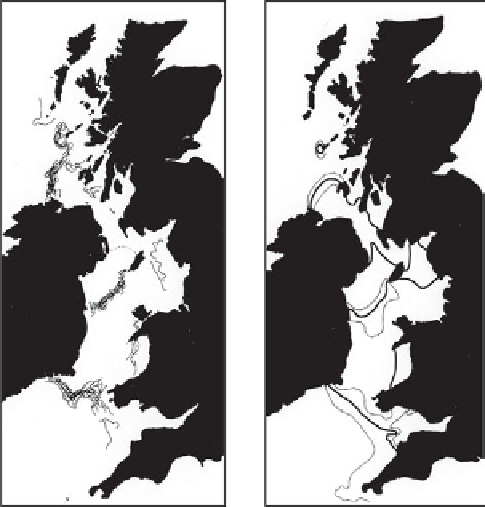Geoscience Reference
In-Depth Information
8.2
Fortnightly and seasonal adjustment in the position of fronts
......................................................................................................................
While a large part of the variability in the frontal positions evident in
Fig. 8.2a
is
simply due to the to-and-fro of the tidal currents, a small component of the move-
ment is attributable to the spring-neap cycle of tidal mixing. This has important
implications for the biology of fronts. The physics of this spring-neap movement also
provides us with a test of the theory of frontal positions which leads to further insight
into the behavior of the fronts. We will now focus on how our simple theory initially
fails when confronted by the spring-neap adjustment problem, and how we need to
modify the theory to accommodate the spring-neap cycle and see what we learn from
the extended theory.
8.2.1
The equilibrium adjustment
We found in
Chapter 6
that the position of the fronts is controlled by the competition
between buoyancy input by heating on the one hand and stirring by the tides
and winds on the other. Since the tidal currents increase by a factor of
2 between
neap and spring tides, the stirring power, which is proportional to u
3
, will be
increased by
∼
2
3
8. We might expect the fronts to adjust their position in response
to such large changes in stirring. If the change happened sufficiently slowly,
there would be a continuous equilibrium between heating and stirring so that fronts
¼
∼
(a)
(b)
Figure 8.2
(a) Composite of
frontal positions from clear
images for the period
May-September 1980, and
(b) contours of SH from a
numerical model showing the
predicted frontal positions at
SH
¼
2.7 (thick lines) and the
extent of the transition
zone (thin lines) defined by
D
SH
¼þ
/
0.5. After
Simpson and James,
1986
,
courtesy of the American
Geophysical Union.






Search WWH ::

Custom Search